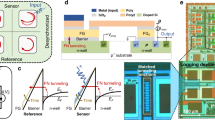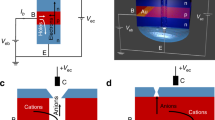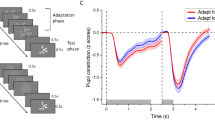Abstract
IN 193111 described the use of a differential photoelectric cell connected to a ‘secondary’ galvanometer for amplifying the movements of a ‘primary’ one. The only suitable cell available then was a cuprous oxide one, and the current produced by it was not great enough to allow a quick (and therefore insensitive) secondary galvanometer to be used; consequently, although sufficient amplification was obtained, the movements were slowed. This slowing of movements is an even greater objection to the thermal relay of Moll and Burger since the thermocouple introduces a further lag which the photo-cell does not.
This is a preview of subscription content, access via your institution
Access options
Subscribe to this journal
Receive 51 print issues and online access
$199.00 per year
only $3.90 per issue
Buy this article
- Purchase on Springer Link
- Instant access to full article PDF
Prices may be subject to local taxes which are calculated during checkout
Similar content being viewed by others
References
J. Sci. Instr., 8, 262.
Author information
Authors and Affiliations
Rights and permissions
About this article
Cite this article
HILL, A. Galvanometer Amplification by Photo-Cell. Nature 133, 685–686 (1934). https://doi.org/10.1038/133685b0
Issue Date:
DOI: https://doi.org/10.1038/133685b0
This article is cited by
-
Galvanometers with photoelectric feed-back
Hungarica Acta Physica (1947)
Comments
By submitting a comment you agree to abide by our Terms and Community Guidelines. If you find something abusive or that does not comply with our terms or guidelines please flag it as inappropriate.



